Analysis of Traffic Light Control Systems and Extensions
VerifiedAdded on 2023/05/29
|9
|782
|272
Report
AI Summary
This report provides a comprehensive analysis of potential extensions to a paper on traffic light control systems, emphasizing the importance of the paper's findings for improving urban traffic efficiency, minimizing accidents and delays, reducing fuel waste and air pollution, and minimizing financial losses from traffic congestion. The report suggests enhancements such as a more detailed methodology for creating the TCPN model, incorporating adaptive technologies like AI and IoT, designing a model applicable to autonomous vehicles, addressing sustainability concerns through renewable energy and resource efficiency, and including a cost-benefit analysis of the system. The report references several works related to smart cities, automated driving systems, sustainable development in engineering, and traffic predictability.
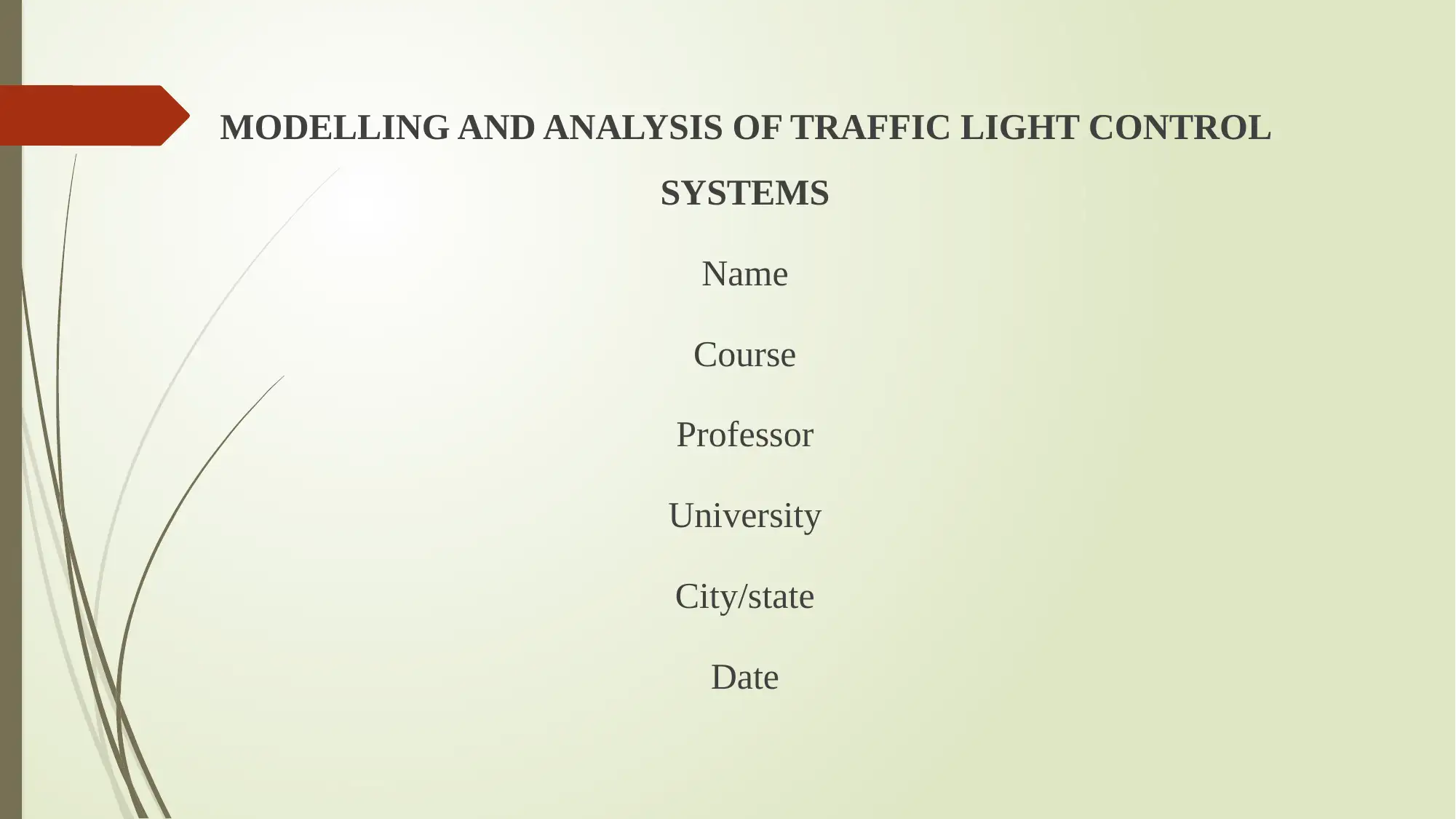
MODELLING AND ANALYSIS OF TRAFFIC LIGHT CONTROL
SYSTEMS
Name
Course
Professor
University
City/state
Date
SYSTEMS
Name
Course
Professor
University
City/state
Date
Paraphrase This Document
Need a fresh take? Get an instant paraphrase of this document with our AI Paraphraser
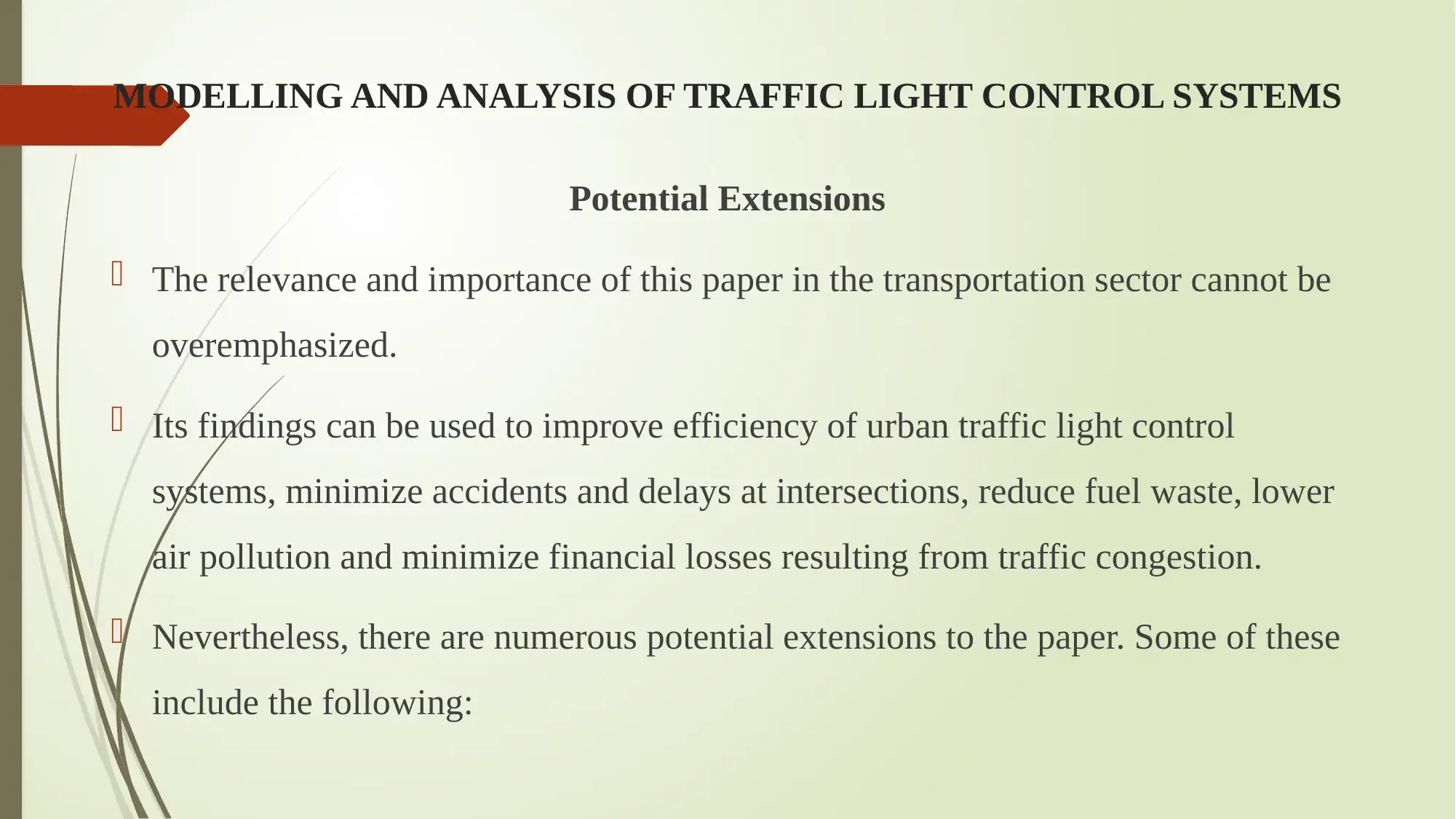
MODELLING AND ANALYSIS OF TRAFFIC LIGHT CONTROL SYSTEMS
Potential Extensions
The relevance and importance of this paper in the transportation sector cannot be
overemphasized.
Its findings can be used to improve efficiency of urban traffic light control
systems, minimize accidents and delays at intersections, reduce fuel waste, lower
air pollution and minimize financial losses resulting from traffic congestion.
Nevertheless, there are numerous potential extensions to the paper. Some of these
include the following:
Potential Extensions
The relevance and importance of this paper in the transportation sector cannot be
overemphasized.
Its findings can be used to improve efficiency of urban traffic light control
systems, minimize accidents and delays at intersections, reduce fuel waste, lower
air pollution and minimize financial losses resulting from traffic congestion.
Nevertheless, there are numerous potential extensions to the paper. Some of these
include the following:
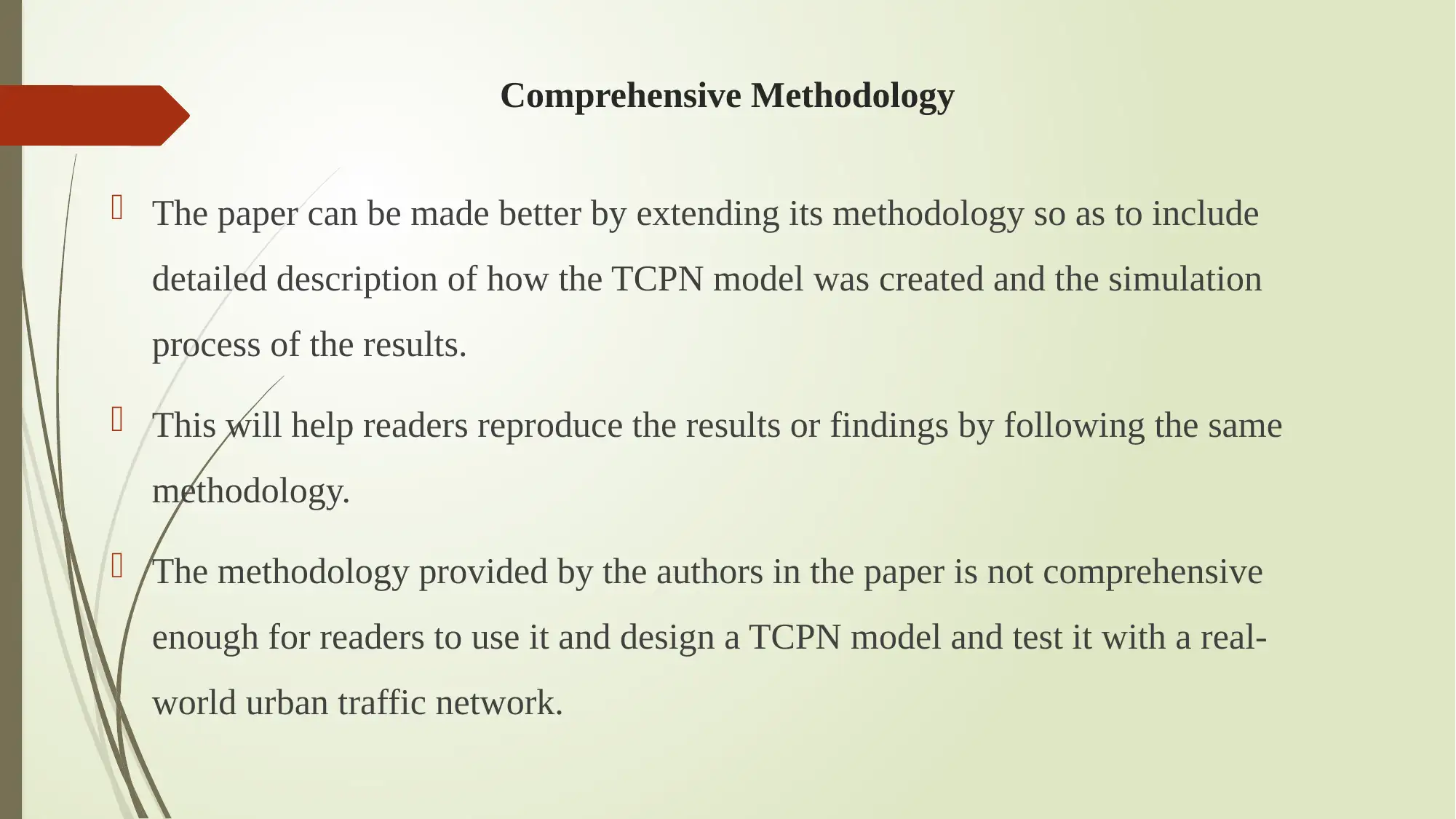
Comprehensive Methodology
The paper can be made better by extending its methodology so as to include
detailed description of how the TCPN model was created and the simulation
process of the results.
This will help readers reproduce the results or findings by following the same
methodology.
The methodology provided by the authors in the paper is not comprehensive
enough for readers to use it and design a TCPN model and test it with a real-
world urban traffic network.
The paper can be made better by extending its methodology so as to include
detailed description of how the TCPN model was created and the simulation
process of the results.
This will help readers reproduce the results or findings by following the same
methodology.
The methodology provided by the authors in the paper is not comprehensive
enough for readers to use it and design a TCPN model and test it with a real-
world urban traffic network.
⊘ This is a preview!⊘
Do you want full access?
Subscribe today to unlock all pages.

Trusted by 1+ million students worldwide
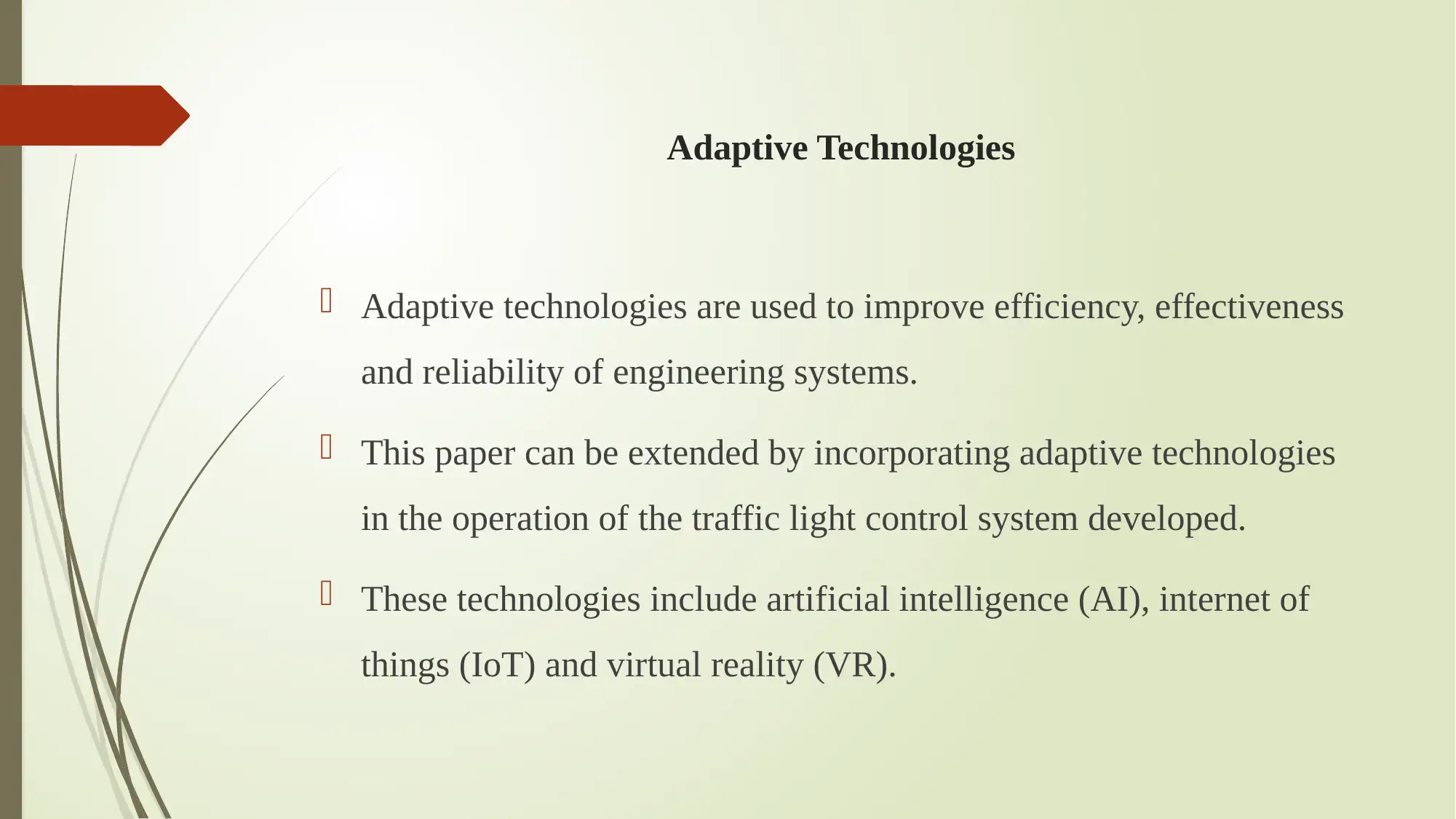
Adaptive Technologies
Adaptive technologies are used to improve efficiency, effectiveness
and reliability of engineering systems.
This paper can be extended by incorporating adaptive technologies
in the operation of the traffic light control system developed.
These technologies include artificial intelligence (AI), internet of
things (IoT) and virtual reality (VR).
Adaptive technologies are used to improve efficiency, effectiveness
and reliability of engineering systems.
This paper can be extended by incorporating adaptive technologies
in the operation of the traffic light control system developed.
These technologies include artificial intelligence (AI), internet of
things (IoT) and virtual reality (VR).
Paraphrase This Document
Need a fresh take? Get an instant paraphrase of this document with our AI Paraphraser
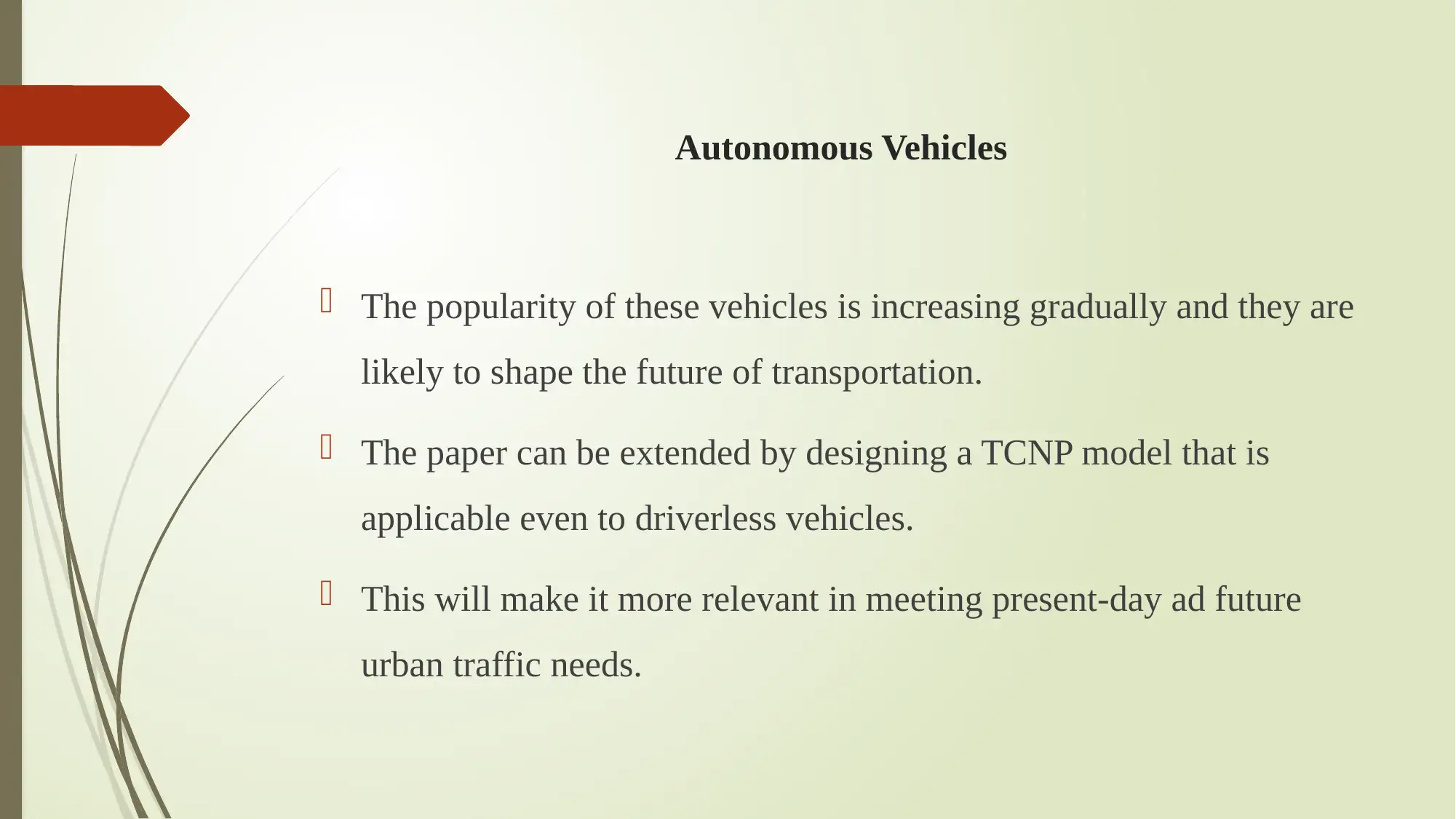
Autonomous Vehicles
The popularity of these vehicles is increasing gradually and they are
likely to shape the future of transportation.
The paper can be extended by designing a TCNP model that is
applicable even to driverless vehicles.
This will make it more relevant in meeting present-day ad future
urban traffic needs.
The popularity of these vehicles is increasing gradually and they are
likely to shape the future of transportation.
The paper can be extended by designing a TCNP model that is
applicable even to driverless vehicles.
This will make it more relevant in meeting present-day ad future
urban traffic needs.
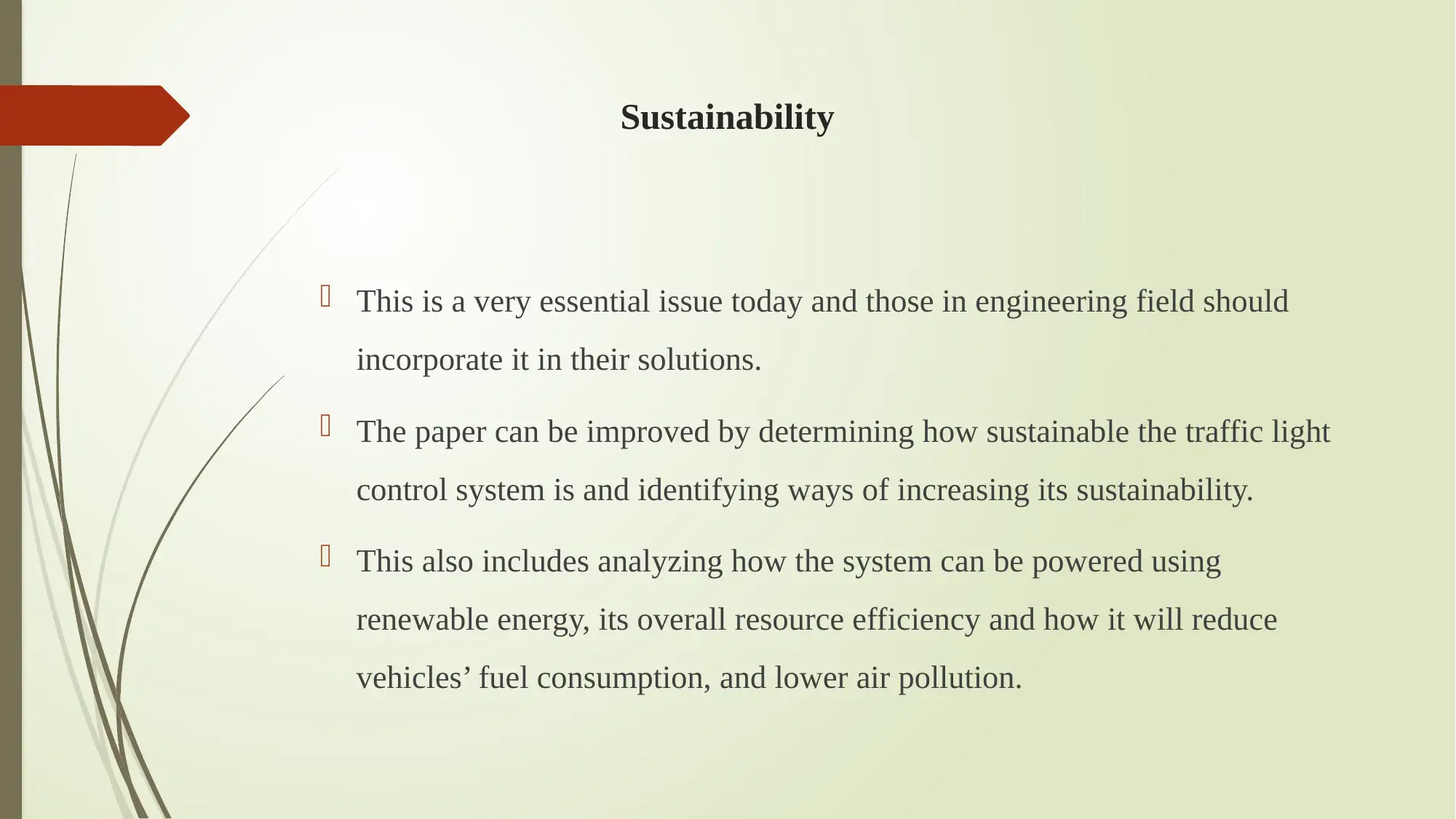
Sustainability
This is a very essential issue today and those in engineering field should
incorporate it in their solutions.
The paper can be improved by determining how sustainable the traffic light
control system is and identifying ways of increasing its sustainability.
This also includes analyzing how the system can be powered using
renewable energy, its overall resource efficiency and how it will reduce
vehicles’ fuel consumption, and lower air pollution.
This is a very essential issue today and those in engineering field should
incorporate it in their solutions.
The paper can be improved by determining how sustainable the traffic light
control system is and identifying ways of increasing its sustainability.
This also includes analyzing how the system can be powered using
renewable energy, its overall resource efficiency and how it will reduce
vehicles’ fuel consumption, and lower air pollution.
⊘ This is a preview!⊘
Do you want full access?
Subscribe today to unlock all pages.

Trusted by 1+ million students worldwide
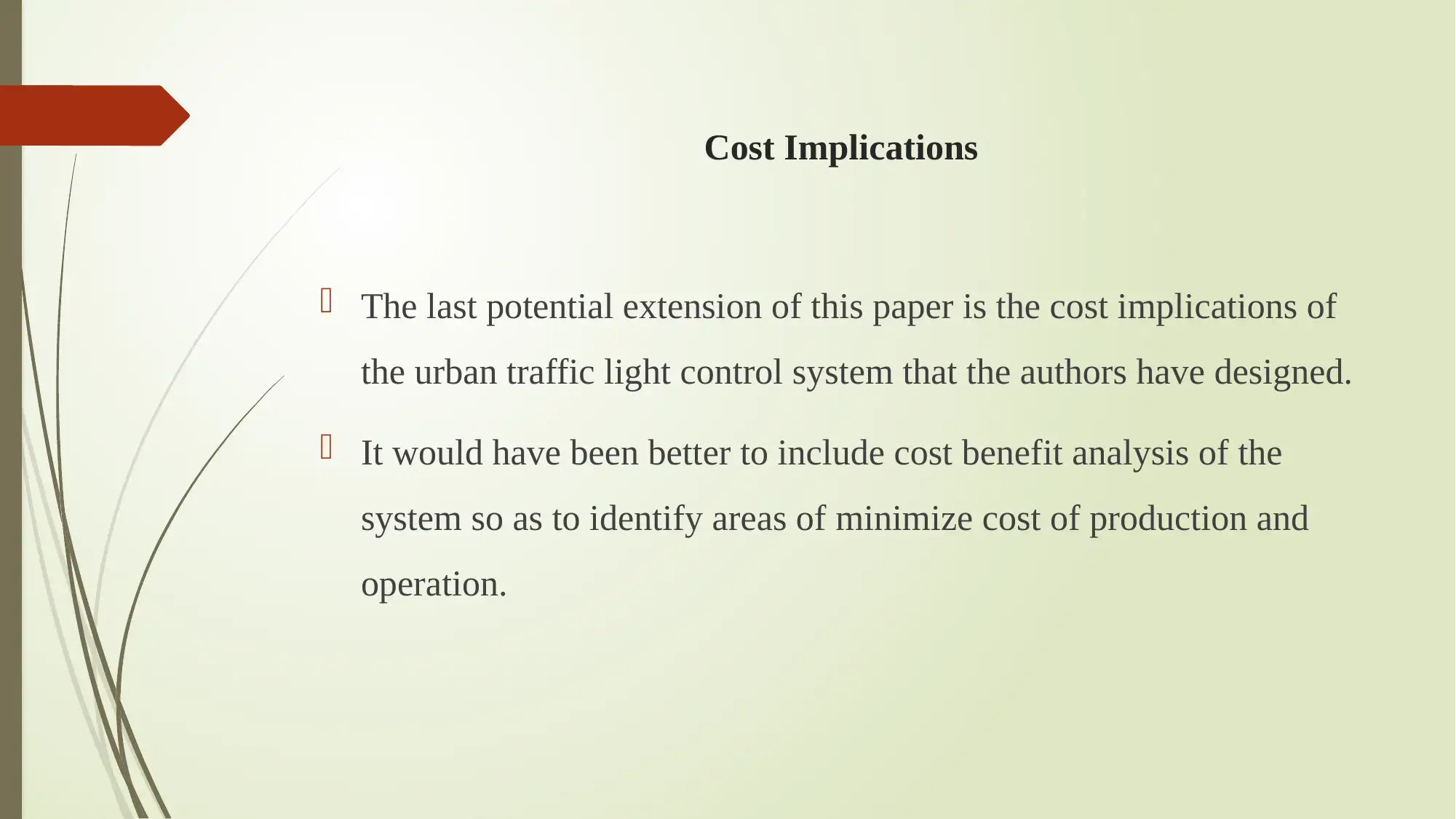
Cost Implications
The last potential extension of this paper is the cost implications of
the urban traffic light control system that the authors have designed.
It would have been better to include cost benefit analysis of the
system so as to identify areas of minimize cost of production and
operation.
The last potential extension of this paper is the cost implications of
the urban traffic light control system that the authors have designed.
It would have been better to include cost benefit analysis of the
system so as to identify areas of minimize cost of production and
operation.
Paraphrase This Document
Need a fresh take? Get an instant paraphrase of this document with our AI Paraphraser
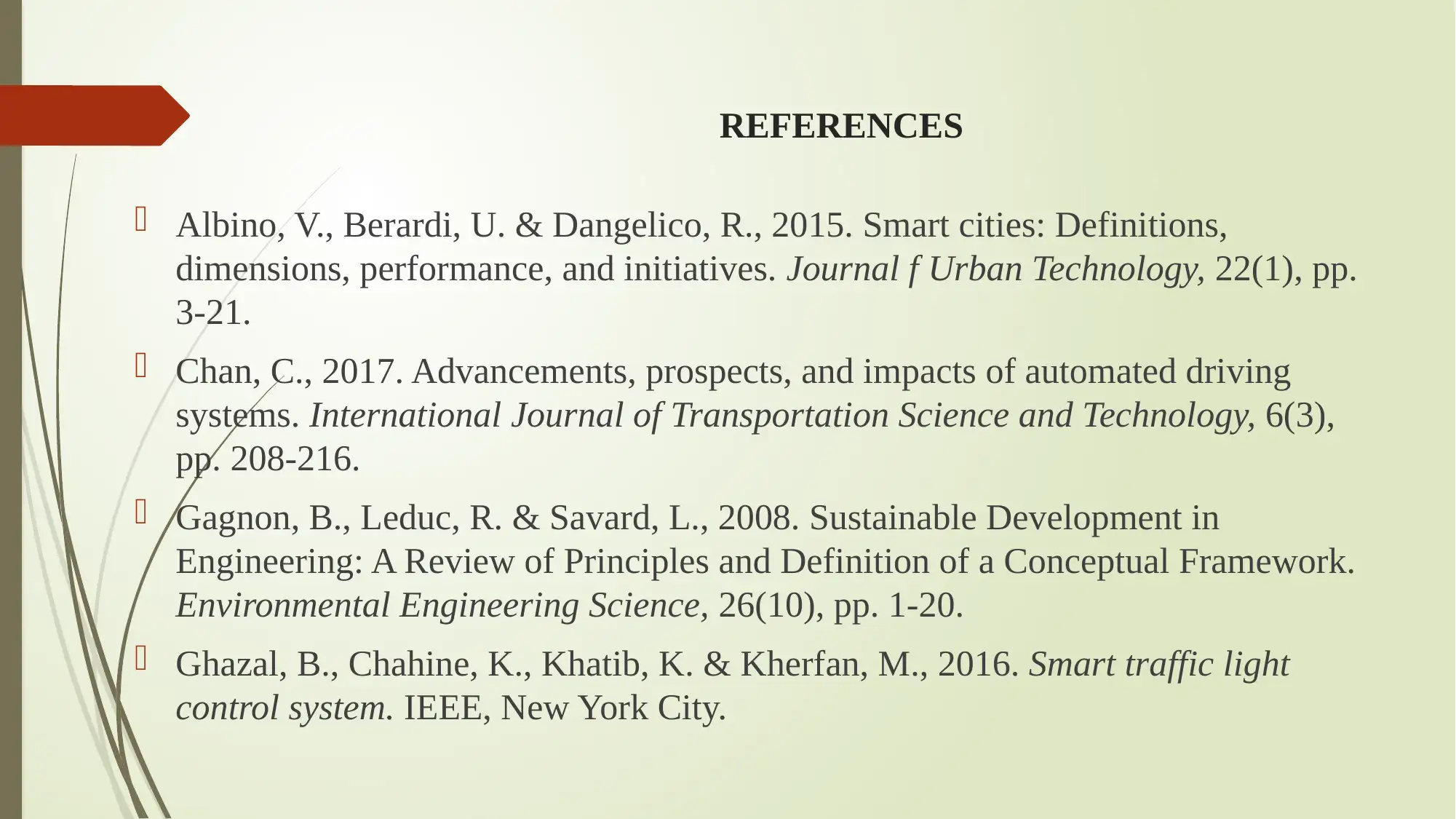
REFERENCES
Albino, V., Berardi, U. & Dangelico, R., 2015. Smart cities: Definitions,
dimensions, performance, and initiatives. Journal f Urban Technology, 22(1), pp.
3-21.
Chan, C., 2017. Advancements, prospects, and impacts of automated driving
systems. International Journal of Transportation Science and Technology, 6(3),
pp. 208-216.
Gagnon, B., Leduc, R. & Savard, L., 2008. Sustainable Development in
Engineering: A Review of Principles and Definition of a Conceptual Framework.
Environmental Engineering Science, 26(10), pp. 1-20.
Ghazal, B., Chahine, K., Khatib, K. & Kherfan, M., 2016. Smart traffic light
control system. IEEE, New York City.
Albino, V., Berardi, U. & Dangelico, R., 2015. Smart cities: Definitions,
dimensions, performance, and initiatives. Journal f Urban Technology, 22(1), pp.
3-21.
Chan, C., 2017. Advancements, prospects, and impacts of automated driving
systems. International Journal of Transportation Science and Technology, 6(3),
pp. 208-216.
Gagnon, B., Leduc, R. & Savard, L., 2008. Sustainable Development in
Engineering: A Review of Principles and Definition of a Conceptual Framework.
Environmental Engineering Science, 26(10), pp. 1-20.
Ghazal, B., Chahine, K., Khatib, K. & Kherfan, M., 2016. Smart traffic light
control system. IEEE, New York City.
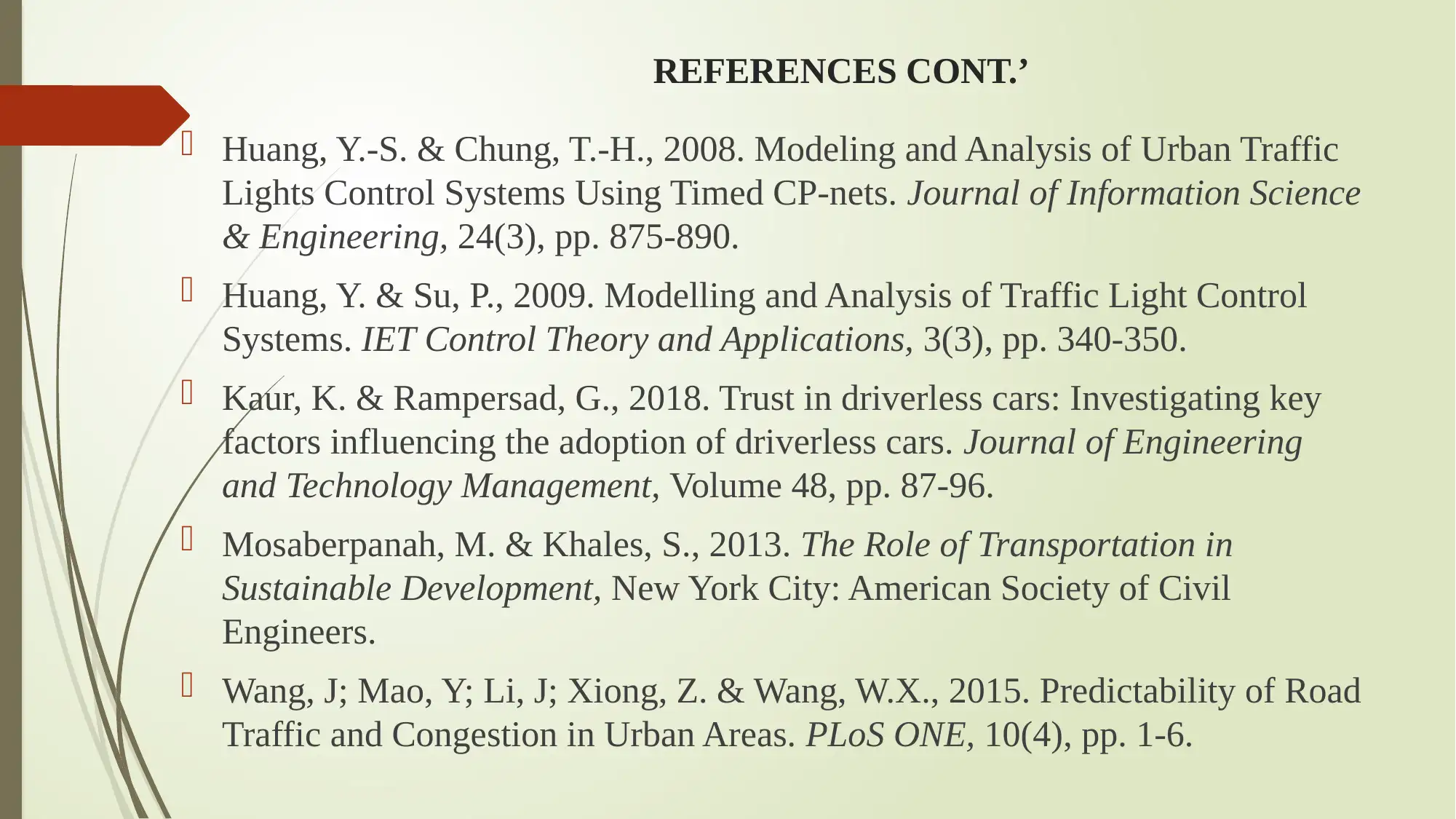
REFERENCES CONT.’
Huang, Y.-S. & Chung, T.-H., 2008. Modeling and Analysis of Urban Traffic
Lights Control Systems Using Timed CP-nets. Journal of Information Science
& Engineering, 24(3), pp. 875-890.
Huang, Y. & Su, P., 2009. Modelling and Analysis of Traffic Light Control
Systems. IET Control Theory and Applications, 3(3), pp. 340-350.
Kaur, K. & Rampersad, G., 2018. Trust in driverless cars: Investigating key
factors influencing the adoption of driverless cars. Journal of Engineering
and Technology Management, Volume 48, pp. 87-96.
Mosaberpanah, M. & Khales, S., 2013. The Role of Transportation in
Sustainable Development, New York City: American Society of Civil
Engineers.
Wang, J; Mao, Y; Li, J; Xiong, Z. & Wang, W.X., 2015. Predictability of Road
Traffic and Congestion in Urban Areas. PLoS ONE, 10(4), pp. 1-6.
Huang, Y.-S. & Chung, T.-H., 2008. Modeling and Analysis of Urban Traffic
Lights Control Systems Using Timed CP-nets. Journal of Information Science
& Engineering, 24(3), pp. 875-890.
Huang, Y. & Su, P., 2009. Modelling and Analysis of Traffic Light Control
Systems. IET Control Theory and Applications, 3(3), pp. 340-350.
Kaur, K. & Rampersad, G., 2018. Trust in driverless cars: Investigating key
factors influencing the adoption of driverless cars. Journal of Engineering
and Technology Management, Volume 48, pp. 87-96.
Mosaberpanah, M. & Khales, S., 2013. The Role of Transportation in
Sustainable Development, New York City: American Society of Civil
Engineers.
Wang, J; Mao, Y; Li, J; Xiong, Z. & Wang, W.X., 2015. Predictability of Road
Traffic and Congestion in Urban Areas. PLoS ONE, 10(4), pp. 1-6.
⊘ This is a preview!⊘
Do you want full access?
Subscribe today to unlock all pages.

Trusted by 1+ million students worldwide
1 out of 9
Related Documents
Your All-in-One AI-Powered Toolkit for Academic Success.
+13062052269
info@desklib.com
Available 24*7 on WhatsApp / Email
![[object Object]](/_next/static/media/star-bottom.7253800d.svg)
Unlock your academic potential
Copyright © 2020–2025 A2Z Services. All Rights Reserved. Developed and managed by ZUCOL.

![Hybrid and Electric Vehicles: Battery Power Report - [University Name]](/_next/image/?url=https%3A%2F%2Fdesklib.com%2Fmedia%2Fimages%2Foz%2Fe29569c874f844d2874f09f043debbd5.jpg&w=256&q=75)



